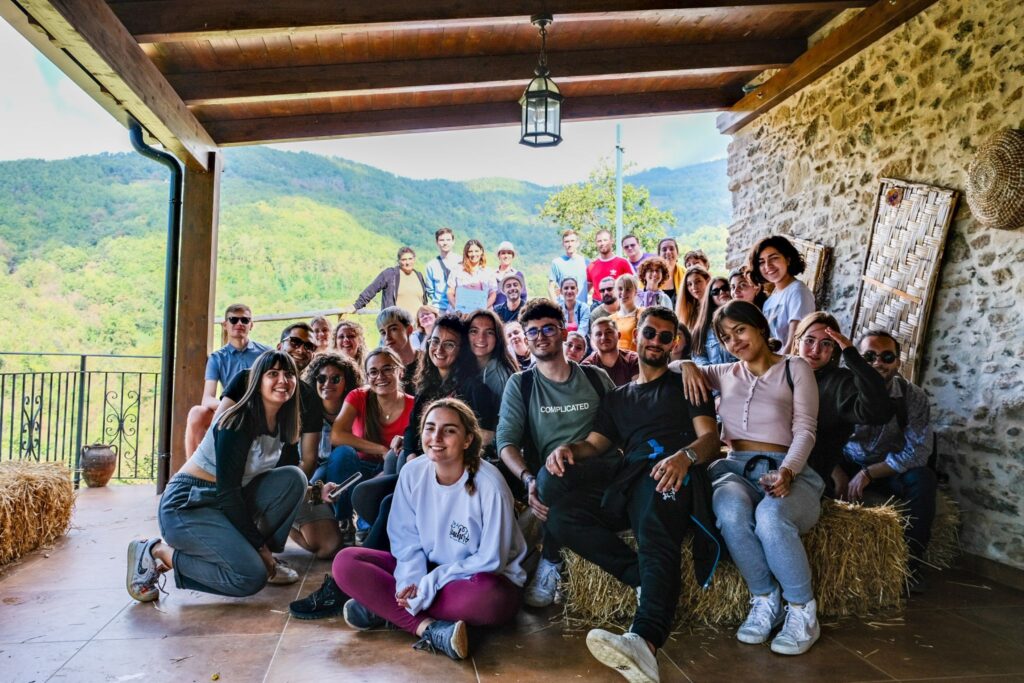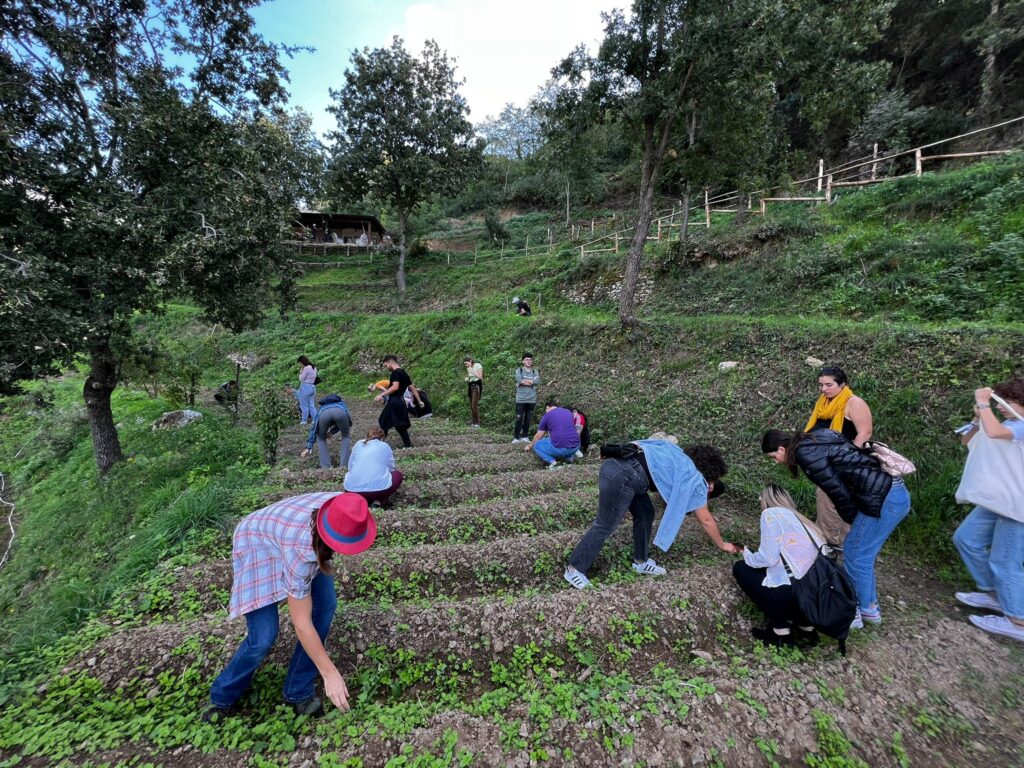L’energizer del mattino è stato camminare sino al locale denominato Blue Moon (dove abbiamo bevuto un buon caffè), in quanto era il punto di ritrovo per le prime attività di giornata.
Da qui abbiamo mosso verso un’azienda che produce zafferano. I proprietari ci hanno accolto in modo caloroso, ed in seguito ci siamo attivati con alcuni workshop nell’azienda. Abbiamo scoperto che qui si trovava un antico monastero, con un tunnel sotterraneo diretto al centro di Fuscaldo. Abbiamo poi formato dei gruppetti per togliere un poco di erbacce intorno le piante di zafferano. La descrizione degli ortaggi e piante presenti nei terreni è stata molto interessante, ed allo stesso tempo abbiamo avuto modo di capire quanto è costoso un lavoro agricolo del genere in Italia.
Continuando il nostro tuor, abbiamo scoperto come alcuni insetti come le coccinelle lavorano per contrastare l’influenza negativa di altri insetti sugli ortaggi e sulle piante (ad esempio la piantumazione dei fichi fra gli oliveti).
Alla fine di questo tour abbiamo ricevuto come ricompensa un lungo coffee break nella fantastica azienda agricola di San Giovanni Vecchio.
Nella seconda attività di giornata ci siamo ritrovati sul palco dell’auditorium dove abbiamo condiviso le nostre impressioni sull’azienda di San Giovanni Vecchio, portata avanti da Simona Mantuano, su come il terreno si rigenera, sulla coltivazione dello zafferano, sulla coltivazione di olive nere e granati. Dopo un piccolo dibattito abbiamo ripreso le attività iniziate il giorno prima, dove ogni Paese partecipante al progetto ha portato avanti il lavoro intenso per la stesura del booklet.
Dopo il pranzo ed una meritata siesta siamo tornati presso l’auditorium per continuare le attività di scrittura del nostro booklet. Durante l’ultima parte di giornata abbiamo apprezzato la musica dal vivo durante la cena, ed abbiamo continuato con una festa di arrivederci per i nostri amici che presto torneranno nei rispettivi Paesi.
Il team Romeno.
The energizer this morning consisted of a walk to the local Blue Moon (where we also had coffee), the meeting point for today’s first activity.
Afterwards we went to visit the saffron farm. The owners gave us a warm welcome, and then we started our tour of the farm. We discovered the ruins of a monastery on the farm as well as a tunnel leading to the centre of Fuscaldo. Afterwards, we formed small groups together and then we weeded the small saffron plantation. The description of the crop was very interesting, at the same time learning what is even the cost of establishing this crop in Italy.
Continuing the tour, it was also explained how some insects can be controlled with the help of ladybugs and also about the deviation of insects from producing crops to other ”bait” plants (example: from olive trees to fig trees).
The end of this tour was rewarded with the long awaited coffee break in the wonderful SanGiovani farm.
In the next stage of today’s programme we all met in the auditorium where each of us expressed our opinions about the SanGiovani Farm, set up and managed by Simona Mantuano, about how the soil is worked, about saffron cultivation and about black olives and pomegranate trees. After the small debate, the task started yesterday afternoon continued, where each of the participating countries worked intensively on writing the booklet.
After lunch break and a well-deserved siesta we returned to the auditorium to complete the writing of the booklet. And in the last part of the day during dinner we enjoyed live music, and then the party organised to say goodbye to the participants who will soon return to their country.
The Romanina Team.


